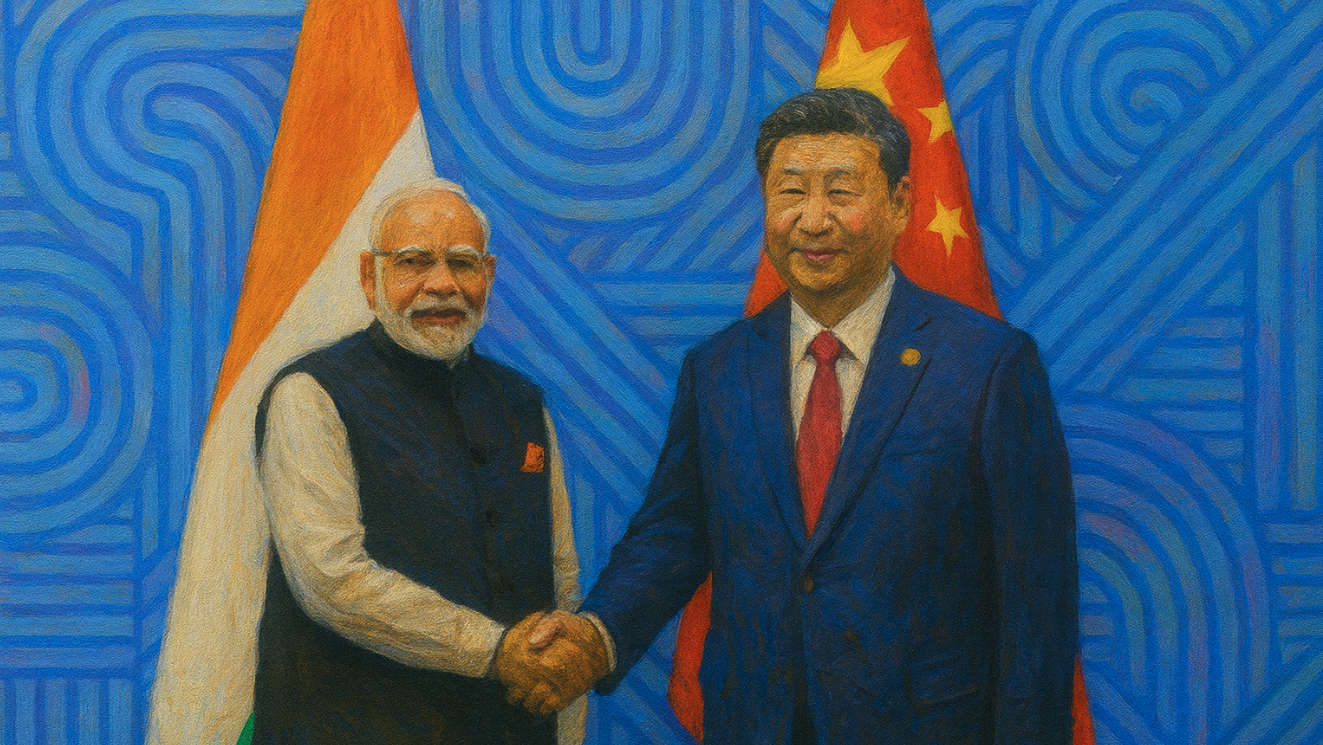India–China Trade Re-Engagement: Strategic Calculus Under Constraint
India and China cautiously resume selective trade after a five-year freeze, reopening border passes, restoring flights, and negotiating key commodity supplies within a “managed rivalry” framework.

India and China are cautiously re-engaging in trade after a five-year freeze, with plans to reopen border passes, resume direct flights, and negotiate supply of rare-earths, fertilisers, and pharmaceutical inputs.
The moves aim to lower input costs for India’s key sectors while providing market stability for China, all within a framework of “managed rivalry.”
Progress remains constrained by unresolved border tensions, a large trade imbalance, and geopolitical sensitivities that could quickly reverse any India and China are cautiously re-engaging in trade after a five-year freeze, with plans to reopen border passes, resume direct flights, and negotiate supply of rare-earths, fertilisers, and pharmaceutical inputs.
In August 2025, India and China are moving cautiously towards limited trade re-engagement after five years of deep freeze. This is not a return to normalisation, but a calculated attempt to secure targeted economic benefits while keeping strategic competition intact. External pressures—most notably U.S. tariff measures affecting Indian exports—have created incentives for both sides to explore selective cooperation within a “managed rivalry” framework.
One of the most significant developments is the move to restart border trade in domestic goods, suspended since 2020. Three Himalayan passes—Lipulekh, Shipki La and Nathu La—are under consideration for reopening, which would re-establish small-scale commercial flows and restore economic linkages in high-altitude border communities. This revival of physical trade routes would carry both symbolic and practical weight in easing tensions along the Line of Actual Control.
Beijing has also proposed supplying rare-earth magnets, fertilisers, and pharmaceutical intermediates to India. These inputs are central to manufacturing, agriculture, and healthcare, and their steady availability would help stabilise supply chains vulnerable to cost fluctuations and export restrictions. For India, access to these commodities could lower production costs in key sectors; for China, such arrangements would secure stable markets during a period of soft external demand.
Another notable step is the resumption of direct flights, halted for nearly five years, which are set to resume in the coming months (link). Air connectivity is a logistical enabler for business travel, technical exchanges, and education-related mobility. Alongside this, China’s ambassador in New Delhi has indicated a willingness to increase imports of Indian goods, a signal that could, if acted upon, help reduce the persistent trade imbalance.
The geopolitical backdrop to these moves is as important as the initiatives themselves. India’s renewed emphasis on BRICS engagement, coupled with friction in its U.S. trade relationship, has created additional space for measured economic engagement with Beijing, without signalling strategic alignment. Both sides appear to recognise that pragmatic economic cooperation does not have to mean convergence in security or political spheres.
The potential benefits for India are substantial. Steady access to rare-earth magnets supports its electric vehicle and renewable energy ambitions; fertilisers are critical for agricultural productivity; and pharmaceutical inputs underpin its globally competitive generics industry. Reliable supply in these areas could lower input costs, reduce production volatility, and strengthen India’s industrial base. For China, deepening economic ties with India offers market stability and a way to counterbalance weakening demand in other major export destinations.
However, there are constraints that cannot be ignored. Without credible de-escalation along the border, economic initiatives will remain narrowly focused and easily reversible. The bilateral trade deficit—around USD 99 billion in China’s favour—is politically sensitive in India, and any increase in imports without corresponding export growth risks domestic backlash. Technology-intensive sectors tied to data security and critical infrastructure will likely remain off-limits. Moreover, shifts in India–China trade patterns may invite scrutiny or counter-pressure from other strategic partners, particularly the United States and Japan.
Over the next year, the most realistic scenario is a phased approach. Pilot projects could reopen selected border passes under controlled conditions, while a time-bound agreement on critical inputs could be established with review clauses and reciprocal concessions. Air links between major commercial hubs could be restored, supported by streamlined visa processes for business and technical personnel. If China’s willingness to import more Indian goods translates into action, targeted export opportunities in sectors such as spices, seafood, and pharmaceuticals could emerge. Multilateral platforms like BRICS and the Asian Infrastructure Investment Bank may be used to institutionalise trade facilitation and insulate technical cooperation from political shocks.
The August 2025 measures are best understood as a tactical recalibration, not a strategic reset. Both countries are seeking to capture economic gains—lower costs for India, market stability for China—while maintaining their respective strategic autonomy. Success will depend on their ability to compartmentalise economic engagement from security disputes. If they fail to do so, this period of pragmatic cooperation may prove to be only a brief interlude in a longer cycle of mistrust.




